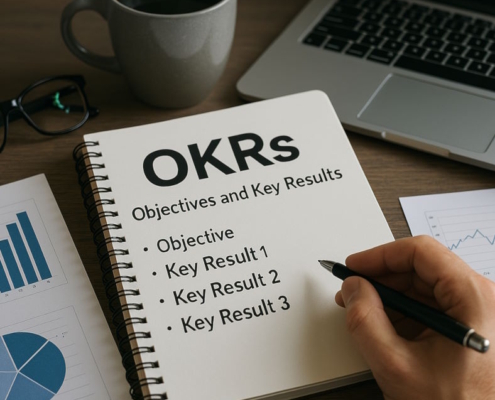What does trademark dilution mean?
In a dispute concerning a well-known brand, like Louis Vuitton or Barbie, you might hear the phrase “trademark dilution” thrown around. Businesses that possess well-known trademarks often use the idea of dilution as an additional justification to sue other companies that use confusingly similar brand names.
But what exactly is trademark dilution and why does it typically involve well-known brands?
Trademarks: What Are They?
The term “trademark” refers to any distinctive symbol, phrase, logo, design, or mix of various elements used to identify a specific product or service. Some trademarks are visual, such as Tiffany blue, while others are auditory, like NBC’s 3 chimes.
Trademark Dilution Elements
Use of a well-known trademark, or a symbol confusingly similar to it, in a manner that dilutes its value is known as trademark dilution. Diluting a trademark can take two forms:
In order to establish trademark dilution, you must:
- Demonstrate that your brand is well-known
- Prove that another party’s use of your mark or an identical mark has obscured or damaged your mark, or both.
Evidence of a Trademark’s Recognition
A well-known trademark is one that people often associate with a specific brand of goods or services. Consider FedEx for package delivery, Disney for theme parks, and Apple for phones. Famous trademarks aren’t always easy to spot, though.
A court will look at four things to figure out if a mark is famous:
- Amount, duration, and scope of the mark’s advertising and publicizing
- How many products or services were sold under the symbol, for how long, and how broadly
- How many people can identify the mark
- When the symbol was first entered in the principal registry
If another party has used a famous trademark or something that is very similar to it, then the owner of the famous mark has the right to file a lawsuit for trademark dilution via blurring or trademark dilution via tarnishment.
Dilution of Trademarks by Blurring
“Blurring” occurs when another mark that is confusingly similar to the famous mark makes it less noticeable. In order for a mark to be eligible for trademark protection, it must be unique, which means that it must be able to one-of-a-kind identify a specific group of products or services.
Trademark protections are at stake when someone else uses a well-known mark (or one that is confusingly similar) in a way that dilutes the distinctiveness of the well-known mark’s connected services and goods. Consequently, trademark owners desire (and often require) measures to prevent the trademark from becoming less identifiable due to blurring.
Why Recognized Marks Require Measures to Prevent Blurring
Because well-known markings are more easily imitated than less well-known ones, dilution via blurring is kept solely for them. It may not seem like much if one individual or business copies a trademark, but when such incidents add up, it can significantly damage the trademark.
Also, many different services and products are often connected with well-known trademarks. Customers should be aware of which services and goods go under a certain brand name. The very purpose of a trademark—its capacity to distinguish between different sources of goods and services—becomes useless if buyers are unaware which brands manufacture particular goods and services.
As an illustration, the Amazon brand is connected to a wide range of products and services, such as those connected with advertising, home security, computer gaming, and furniture. Let’s say Roger began offering baby food for sale using the Amazon symbol. Given your familiarity with the Amazon brand and its logo, you might not give this baby food a second thought because it is a product of Amazon’s.
Even if you don’t believe Amazon makes the product, you might still buy it because you have faith in the brand. At the same time that Roger is reaping the benefits of Amazon’s popularity, the distinctive identifier is losing some of its impact due to its association with items sold by competitors.
Blurring Factor Dilution
In order to establish whether a trademark might lead to dilution via blurring, a court will take six considerations into account:
- The degree to which the mark resembles the well-known logo
- The uniqueness of the well-known logo
- The extent to which the well-known mark’s owner uses the mark exclusively
- How many individuals are familiar with the well-known logo
- The intent of the mark’s user in making a relationship to the well-known mark
- A genuine connection between the design and the well-known mark.
As an illustration, let’s say that Larry is in the business of selling shampoo, and that he affixes a label to each shampoo container that is basically an exact replica of the Starbucks emblem. Larry cannot use the Starbucks logo without the company’s explicit consent. A court may find that Larry’s use diminishes the uniqueness of the Starbucks logo since he uses the Starbucks copycat logo on non-Starbucks products.
Taking everything into account, Larry made use of a nearly identical replica (first element) of a very distinctive (second element) and easily recognizable mark (fourth element). In addition, a judge may rule that customers may have trouble distinguishing between Larry’s items and those bearing the Starbucks name because of his usage of the symbol.
Dilution of a trademark by tarnishment
Blurring is more complex than tarnishment. The concept of blurring pertains to a mark’s uniqueness, which is a multifaceted quality that falls on a spectrum. To determine whether a mark’s distinctiveness has been diminished, the courts, as one might expect, consider a wide range of considerations. On the other hand, tarnishing is far more obvious.
In trademark law, “tarnishing” occurs when another mark that is confusingly close to or even the same as the famous mark damages its reputation. An example of tarnishing a well-known trademark would be associating it with low-quality goods or services or painting the symbol or its owner in an unattractive or scandalous light.
As an illustration, let’s say Susie uses the Gerber trademark to sell clothes that have foul language and images. The baby food brand can claim that the offending shirts worn by Susie damage the family-friendly image of their company.
Trademark Infringement and Trademark Dilution
Perhaps you are familiar with the concept of trademark infringement. A trademark infringement occurs when another party uses a mark confusingly similar to yours in a manner that might lead customers to mistake your goods for those of another party.
Think about it this way: if you sell sneakers under the name “Nikey,” the law would claim that people would probably think your product is Nike shoes since your brand name is so close to the Nike trademark. They wouldn’t be able to recognize the difference.
In many cases, larger corporations will file a combined trademark infringement and dilution lawsuit. Infringement and dilution are not the same thing, even though they both deal with the illegal use of a trademark that is identical or confusingly similar.
For trademark dilution to occur, the mark must be well-known. When it comes to trademark infringement, any owner can file a lawsuit, but only prominent mark owners can sue for trademark dilution.
There must be a possibility of confusion for trademark infringement to occur. To win a trademark infringement lawsuit, you must show that the public is likely to mistake the defendant’s mark for your own. There is no need to prove that consumers were actually or probably confused while arguing dilution.
An infringement of a trademark typically involves marks that are linked with services or goods that are related to one another. The usual criteria for trademark infringement are:
- There are similarities between the marks themselves
- The marks are linked to products or services that are related to one another
Take the hypothetical situation where you sell car parts using the name “Taco Bell.” People probably wouldn’t believe that the fast-food chain Taco Bell would sell car parts, so you likely wouldn’t infringe on the Taco Bell trademark. On the other hand, if you use the word in any way, you might be reducing the value of the Taco Bell trademark — ergo, dilution.
The Trademark Dilution Revision Act
Not until 1996 did Congress pass the Federal Trademark Dilution Act (FTDA), making it illegal to dilute a trademark in any way. Approximately half of the states offered protection against dilution at that time, typically through the use of injunctions (court orders) to prevent additional use of the mark.
The courts disagreed and were confused about how to interpret the statute, as is typical with new laws. For instance, there was a lack of consensus among the courts regarding the necessity of demonstrating actual dilution in addition to actual harm in order to establish dilution.
With the passage of the Trademark Dilution Revision Act (TDRA) in 2006, Congress largely put an end to this confusion. Pub. L. 109-312 superseded and considerably altered the Federal Trademark Law (FTDA), making it the principal federal statute regulating trademarks.
Explanation of the Dilution Burden of Proof
The TDRA made it quite clear what evidence an owner required to get an injunction to prevent tarnishing or blurring, which can dilute their rights. The TDRA made it such that the owner of the well-known mark is no longer required to prove:
- Likely or actual confusion
- Actual financial damage
- Competition
When the Claim of Dilution Is Not Valid
Dilution via blurring or tarnishment does not apply to certain activities, according to the TDRA. Put simply, you are not able to file a dilution lawsuit in any of the following instances:
1. Fair use
In the event that another party makes use of the owner’s well-known mark for:
- Advertisements that allow customers to compare products or services
- Praising, criticizing, or making fun of the famous trademark owner or their products or services
- The fair use doctrine of trademark law protects these kinds of usage.
2. Providing news and analysis
Dilution does not apply to any kind of news coverage and commentary. For instance, BP would be unable to sue a news reporter for dilution if the reporter stated in their environmental report that the oil spill had damaged the ecosystem. The journalist is merely reporting the news and offering opinions regarding the BP brand.
3. Used for non-commercial purposes
Dilution does not apply to any use of a mark that is not done for profit. For example, a study about the detrimental impacts of the Paleo diet on health would most likely not be vulnerable to a dilution case.
As an example, the Fourth Circuit Court of Appeals ruled in the first TDRA appeal that using the name “Chewy Vuitton” to describe a dog toy that was “evocative” of a Louis Vuitton bag did not dilute the Louis Vuitton trademark. The offender presented the judge with a collection of dog toys that mocked well-known designers, including “Furcedes” (a play on Mercedes) and “Chewnel No. 5” (a play on Chanel No. 5).
The court decided that “Chewy Vuitton” was satire and that a well-executed parody would not water down the luxury label. It even went so far as to claim that the brand’s fame could increase if the spoof was well-received.
Remedies for Dilution, Including Damages
Famous mark owners can seek injunctions and monetary damages (including defendant’s profits, plaintiff’s costs, and legal fees) through the TDRA. If the TDRA was in force at the time of the unauthorized use of the owner’s renowned mark, the owner might seek monetary damages and an injunction.
Apart from exploiting the mark subsequent to the TDRA’s implementation, the individual who unauthorizedly used the mark was required to have:
- Purposefully sought to profit from the popularity of the well-known brand
- Purposefully sought to damage the prestige of the well-known mark
The owner of a well-known mark may seek monetary damages from the offending individual or company and/or an injunction to stop using the mark if a court determines that the offender(s) has infringed upon the owner’s rights to use the mark.
Seeking the Advice of a Trademark Lawyer
The thought of facing a trademark dilution lawsuit is terrifying. Large corporations are keen to safeguard their names and have the means to do so.
Seek the advice of a trademark attorney before devoting resources to building your brand if you want to use a name or emblem that is confusingly similar to an existing well-known brand. Spending a few minutes now talking to an attorney can end up saving you a ton of money and hassle later on.
You may want to consult a lawyer after receiving a cease-and-desist letter from a business. You may be able to resolve the issue independently if you intend to cease using the trademark of the corporation and would prefer not to get involved in a legal battle over it. Conversely, consulting a trademark attorney can be beneficial if you wish to explore your alternatives or lack knowledge regarding intellectual property rights. Speaking with a lawyer can help you decide whether to take legal action against the corporation and how to respond to their demand letter.






























